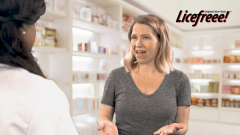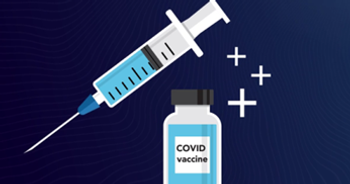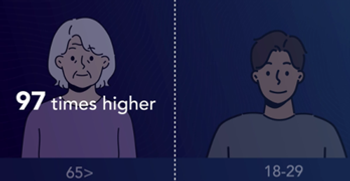
Head Lice OTC Treatment Options and Home Remedies Pharmacists Should Be Aware Of
An examination of non-prescription options available for the treatment of active head lice infestation, such as pesticides and anthelmintic agents, home remedies, and chemical-free products, including information on mechanism of action as well as advantages and disadvantages.
Pharmacist: Costs associated with head lice treatment have been estimated at $1 billion. Yes, you heard correctly. That’s billion with a “B”. Quite a significant investment, right? A lot of people are going to come to us for advice before spending all that money on products, so we need to know everything we can about the various options. Now, there are two camps of people when it comes to dealing with lice. There are those who want to do whatever it takes, including dousing their kids (or themselves) with chemicals to get rid of these bugs and fast. Then there are the others who are reluctant to use those kinds of chemical treatments and want options that are natural and chemical-free. As pharmacists, we have to adapt our approach and recommendations for each of these types of folks. We’ll talk more about that in the next video. For now, we’ll focus on the treatment information you’ll need to know going into those consultations.
Traditional chemical treatments for lice contain pesticides such as permethrin used in Nix and pyrethrins used in RID, or the anthelmintic agent ivermectin used in Sklice. These products are available in various formulations such as lotions, cream rinses, and shampoos. The use of permethrin and pyrethrins lead to neurotoxicity in lice, while ivermectin causes hyperpolarization and paralysis. Both mechanisms of action ultimately end in death of the lice.
Chemical treatments are the most commonly used approach to getting rid of lice. Because permethrin- and pyrethrin-containing products are so commonly used, it might not surprise you to learn that lice are becoming resistant to these chemicals, rendering the products less effective. For example, a study published in the Journal of Medical Entomology has shown that head lice in 48 states have developed a resistance to these chemical pesticides. So, we can’t kill these “super lice” with the traditional methods and that’s becoming a problem.
Well, then you might ask “Couldn’t we increase the dose, that is, use more of the chemical ingredient to try and overcome the resistance?” We could, but not without increasing the risk of toxicity to humans. Although considered to have extremely low mammalian toxicity when used as directed, they are not completely harmless and may enter the body through skin contact, inhalation, and by food or water. In particular, permethrin seems to have a potential adverse effect on fertility, the immune and cardiovascular systems, and neurons. So, resistance and potential toxicity are things to consider when it comes to traditional chemical treatments for lice.
Another thing to be aware of is that these chemicals kill lice, but they don’t kill nits. Leaving nits untreated allows for reinfestation. It only takes a couple of eggs to hatch and you’re back to square one. So, right after chemical treatments are used, patients or parents will still need to go through the hair with a special comb to remove the eggs. So, what sounds like an easy solution for getting rid of lice—blast them with chemicals—is not always so simple or full proof.
As I mentioned before, there is another group of people who are reluctant to use chemical treatments due to concerns about potentially harmful effects. This group of patients may try home remedies or over-the-counter chemical-free products. The list of home remedies that people have tried is long. Some might try wet-combing to remove active lice and nits. Although effective, this method can be very time consuming and requires a lot of patience to complete. Others might try “smothering” or “suffocating” the lice with olive oil, coconut oil, avocado oil, almond oil, or even mayonnaise. Now, there are a couple of reasons why these methods aren’t likely to work. First, head lice have a series of breathing “holes” along both sides of their abdomen. Lice can control these holes and close them off to prevent being smothered. They can “hold their breath” like this for several hours! Next, the eggs. Trying to smother or suffocate the nits is an impossible task, as they are in their protective shells. Like chemical treatments, you must comb out the eggs entirely to avoid reinfestation. Essential oils, such as tea tree oil or lavender oil, diluted with a carrier oil, have been used in an attempt to smother and/or repel lice. It is unclear whether these home remedies work on a consistent basis, that is whether any positive effect is reproducible, in part because of the variability of their constitution. In addition, some people are sensitive to essential oils and might experience a reaction upon contact, which limits their use. In general, natural “home remedies” can still cause reactions in patients if they have sensitivities to the ingredients. There’s very little data on these “smothering” or “suffocating” or even “repelling” remedies so it is difficult to make recommendations or provide guidance to patients regarding these approaches.
There are also some chemical-free, non-toxic natural options commercially available over-the-counter. For example, ClearLice and Lice R Gone, which have essential oils as the main ingredients, and LiceMD and LiceGuard, which use the emollient dimethicone to kill lice by smothering or suffocation. These products are available in various formulations, such as shampoos, gels, and sprays. Generally speaking, common ingredients in chemical-free, non-toxic natural over-the-counter treatment options include essential oils, such as neem, peppermint, or lavender oil, or occlusive agents such as dimethicone. Just like the home remedies and chemical treatments discussed earlier, these treatments might have an effect on the louse but do not on the eggs. You must follow-up with combing in order to remove the eggs and avoid reinfestation.
There is one chemical-free, non-toxic natural product available over-the-counter that has been shown to effectively kill both lice and eggs and that’s LiceFreee! LiceFreee! has a novel mechanism of action compared to other chemical-free options. Its active ingredient is Natrum muriaticum, or sodium chloride also known as salt. But it’s not the kind of salt you would want to eat. The sodium chloride in Licefreee! desiccates head lice and their eggs. This formulation has undergone extensive testing, including a head-to-head clinical study conducted to evaluate the pediculicidal activity and safety of LiceFreee! Spray® compared to 1% Permethrin Crème Rinse. Forty-two subjects were randomized equally to each group. Products were applied to hair according to the label instructions. After application of the products at Day 1 and Day 8, pediculicidal efficacy and safety were assessed at Day 1, Day 8, and Day 15. The second treatment was only applied on Day 8 to individuals with observed live lice using the same products and protocols as Day 1. Proportion of lice free subjects per group, the reduction in number of live lice per head and adverse effects were recorded after each visit. The results showed significantly higher pediculicidal activity for LiceFreee! Spray® (85%) as compared to Permethrin (45%) at Day 15.
LiceFreee! is available as a spray or gel kit. There are also add-on options such as a shampoo that can be used daily to help avoid reinfestation as well as a spray for your home. Of note, it is highly unlikely that lice and nits could build a resistance to Licefreee! because it kills without the use of chemicals. It seems like the sodium chloride approach utilizing LiceFreee! is something worth looking at.
Let’s recap. Traditional chemical treatments for lice contain pesticides such as permethrin and pyrethrins, or the anthelmintic agent ivermectin, that kill lice by neurotoxicity or hyperpolarization and paralysis. Lice resistance and potential toxicity to human are things to consider when it comes to these traditional chemical treatments for lice. There are a number of home remedies people try ranging from wet-combing to the smothering or suffocation of lice. These remedies can be very tedious and time consuming, and the effectiveness of some are unclear. Chemical-free, non-toxic natural options are available over-the-counter, and they tend to use essential oils and/or occlusive agents, such as dimethicone, to kill lice by smothering or suffocation. In general, these treatments may be effective at killing lice, but not their eggs. LiceFreee! is a chemical-free, non-toxic natural over-the-counter option with a novel formulation that is effective against both lice and nits. It’s active ingredient, sodium chloride, kills lice and their eggs through desiccation.
In the end, optimal treatment for head lice infestation should be readily available, safe, and effective in quickly eliminating live lice as well as nits. Removal of live lice should be easy, and the products used to perform this must be affordable. Head lice treatments that meet these criteria are preferred.
Newsletter
Pharmacy practice is always changing. Stay ahead of the curve with the Drug Topics newsletter and get the latest drug information, industry trends, and patient care tips.









































































































































